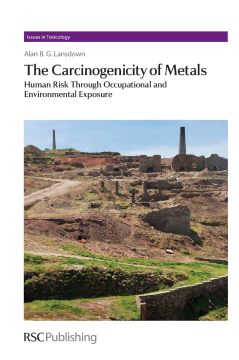
Additional Information
Book Details
Abstract
This book re-evaluates epidemiological and occupational health studies, experimental studies in animals and in vitro experiments relating to the toxicity of 27 metal and metalloid elements for which evidence of carcinogenicity has been presented. Human carcinogenic risk is substantiated in relation to arsenic, beryllium, thorium, chromium, radioactive elements, probably lead, and some nickel and cobalt compounds, and respirable silica particles, but the carcinogenicity of iron, aluminium, titanium, tungsten, antimony, bismuth, mercury, precious metals, and certain related compounds in humans is unresolved. The toxicity and carcinogenicity of each element is specific but correlates poorly with its position in the Periodic Table. Carcinogenicity differs according to the valency of the ion and its ability to interact with and penetrate membranes in target cells and to bind, denature or induce mutations by genotoxic or epigenetic mechanisms.
This important text comprehensively examines each of the elements providing detailed information on the carcinogenicity and toxicity and detailing the most up-to-date research in this area. The book is an essential tool for toxicologists, medicinal and biochemists, and environmental scientists working in both industry and academia.
"...an authoritative reference on the subject....The Carcinogenicity of Metals is a comprehensive and detailed overview of metal/metalloid toxicity and the risks of occupational or environmental exposure to such substances. It is written by an author who is clearly extremely knowledgeable about the subject matter...an excellent text for anybody interested in metals in toxicology and related occupational health and/or medicine at the graduate level and above."
Dr Oliver Jones CBiol MSB
"This book is 18th in a series on issues in toxicology. It is an excellent review of information relating to the potential carci- nogenicity of 27 metals and metalloid elements based on var- ious degrees of evidence from occupational, environmental, animals, and in vitro studies. The author does more than report the results; he evaluates the quality, relevance of the studies, and weight of the evidence of all the relevant data. For each metal, other useful information about natural occurrence, diet- ary levels, toxicity, and so on is listed." "The possible mechanism of carcinogenesis is complex and the author does a good job of summarizing how genetic and epigenetic mechanisms are operational for the various metals." "This book provides an excellent review of metal toxicity and occupational and environmental exposures related to mining and use of metals and would be useful in graduate courses in occupational medicine, toxicology, and carcinogenicity. It would also be a very useful resource to occupational physi- cians, toxicologists, industrial hygienists, environmental, and product safety specialists interested in metal carcinogenicity and occupational and environmental exposure to metals. This book is well written by an individual with an excellent knowl- edge of metal carcinogenicity and related occupational and environmental exposure."
John J. Clary
